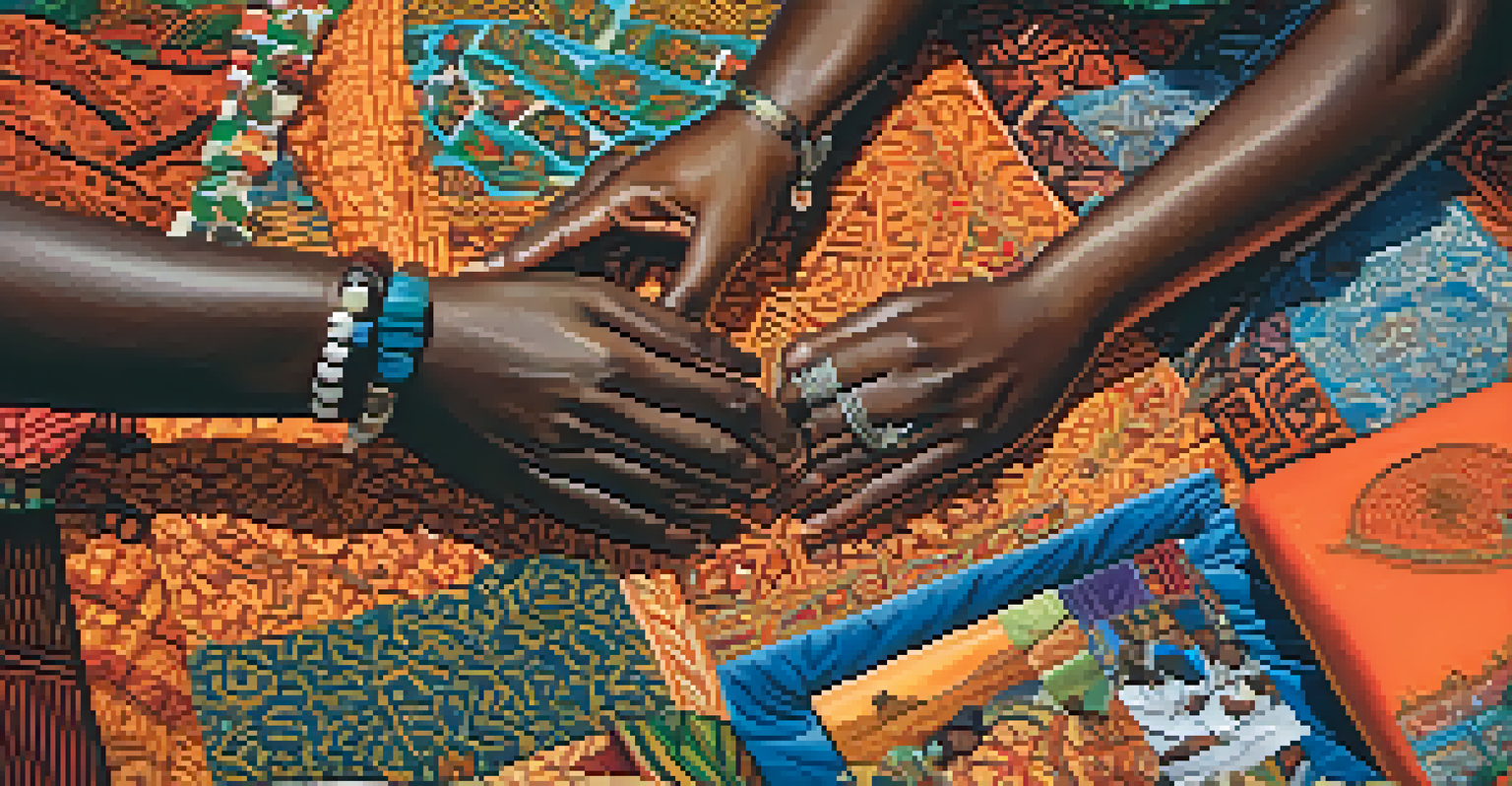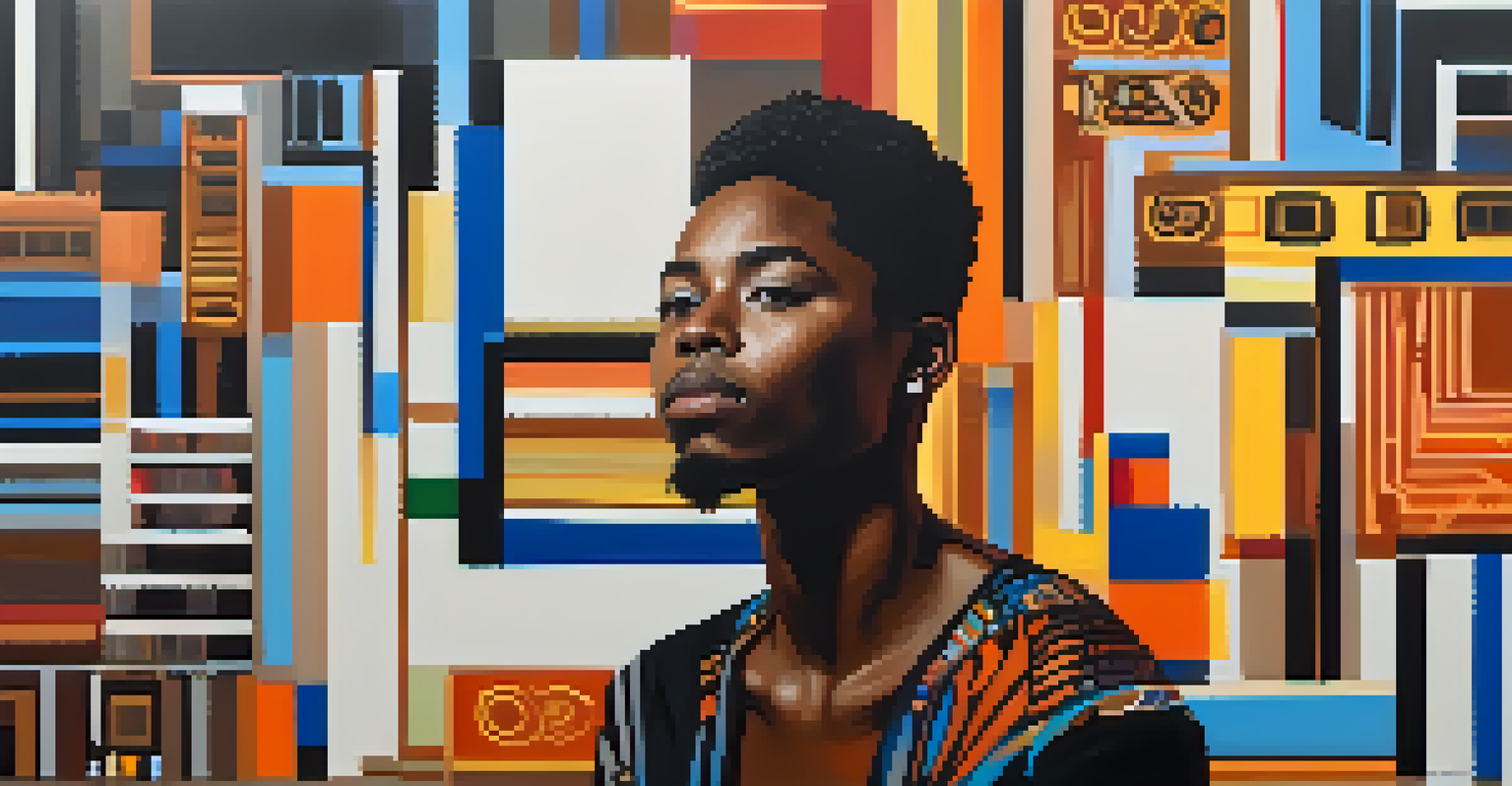The Role of Race in Shaping Contemporary Painting Narratives

Understanding Race in Contemporary Art
In contemporary art, race often serves as a powerful lens through which narratives are constructed. Artists from diverse backgrounds explore their identities and experiences, offering viewers a fresh perspective. This exploration not only enriches the art world but also challenges traditional narratives that have long been dominated by Eurocentric views.
Art is a reflection of society, and it's essential to recognize the voices that have been historically silenced.
For example, artists like Kehinde Wiley and Amy Sherald redefine portraiture by centering Black identities in a way that resonates with cultural pride. Their works offer a counter-narrative to the historical absence of representation in fine art, making their contributions vital in today’s discourse.
Ultimately, understanding race in contemporary art allows us to appreciate the multifaceted stories that shape our collective experience. By recognizing these narratives, we foster a deeper connection to the artwork and the cultural contexts from which they arise.
The Historical Context of Race in Art
Art has always been a reflection of societal values and challenges, and the history of race in art is no exception. From the colonial era to the civil rights movement, racial dynamics have influenced artistic expression and themes. This historical backdrop shapes how contemporary artists approach their work today.

For instance, the Harlem Renaissance was a pivotal moment where African American artists celebrated their culture while addressing racial injustices. This period laid the groundwork for future generations, inspiring artists to use their platforms for activism and storytelling.
Race Shapes Contemporary Narratives
Contemporary artists use race as a lens to explore and redefine identity, challenging traditional Eurocentric narratives.
Recognizing this history is essential for understanding contemporary narratives. It highlights how past struggles and triumphs inform current artistic expressions, ensuring that the discourse around race remains both relevant and impactful.
Race as a Source of Inspiration in Art
For many contemporary artists, race serves as a wellspring of inspiration that shapes their work. This inspiration often stems from personal experiences, family histories, and cultural traditions that reflect their backgrounds. Such influences can manifest in various forms, from color choices to thematic elements.
The role of an artist is to make the world a better place by expressing the complexities of human experience.
Take, for instance, the work of artist Njideka Akunyili Crosby, who blends personal narrative with cultural references in her collages. Her pieces often incorporate elements from Nigerian culture, allowing her to explore identity and belonging through a visually captivating medium.
Incorporating race as a source of inspiration not only enriches the artwork but also invites viewers to engage with deeper questions about identity and representation. This connection fosters a more profound appreciation for the narratives being told.
Intersectionality in Contemporary Art
The concept of intersectionality plays a crucial role in contemporary painting, particularly when discussing race. This idea recognizes that individuals possess multiple identities—such as race, gender, and class—that intersect to shape their experiences. Artists today often embrace this complexity in their work.
For example, Frida Kahlo's paintings reflect her Mexican heritage, gender, and personal health struggles, creating a rich tapestry of narrative that speaks to various audiences. This multifaceted approach encourages viewers to explore the overlapping identities present in the artwork.
Historical Context Influences Art
The historical struggles and achievements related to race inform modern artistic expressions and conversations.
By acknowledging intersectionality, contemporary artists can create more nuanced narratives that resonate with a diverse audience. This approach not only highlights the complexities of identity but also promotes inclusivity within the art world.
Contemporary Artists Challenging Racial Norms
Many contemporary artists are actively challenging racial norms through their work, using their platforms to provoke thought and inspire change. These artists often confront stereotypes and societal expectations, pushing boundaries in their creative expressions. Their bold statements often serve as a catalyst for discussions around race and representation.
Consider the work of artist Toyin Ojih Odutola, who employs intricate drawings to explore the lives of Black individuals, subverting traditional narratives. Her art invites viewers to rethink preconceived notions and encourages a deeper understanding of the complexities of race.
By challenging racial norms, these artists not only contribute to the ongoing dialogue about race in the art world but also inspire future generations to continue this vital work.
The Role of Institutions in Racial Representation
Institutions, such as galleries and museums, play a pivotal role in shaping the narratives around race in contemporary painting. Their choices in exhibiting artists and works can either uplift marginalized voices or perpetuate existing disparities. As such, the responsibility lies with these institutions to actively promote diverse representation.
In recent years, many institutions have begun to recognize the importance of inclusivity, curating exhibitions that celebrate artists from various racial backgrounds. This shift not only enriches the art community but also provides a platform for underrepresented voices to be heard.
Institutions Must Promote Inclusivity
Art institutions play a crucial role in fostering diverse representation, impacting the narratives surrounding race in art.
By fostering an environment where diverse narratives can thrive, institutions contribute significantly to the broader conversation about race in art. Their role in promoting change is essential for cultivating a more equitable art world.
The Future of Race in Contemporary Art
As we look ahead, the role of race in contemporary art will undoubtedly continue to evolve. Emerging artists are increasingly informed by past movements while also challenging the status quo, ensuring that the conversation around race remains dynamic. This evolution reflects broader societal changes and the ongoing quest for equality.
New technologies and platforms, such as social media, also play a crucial role in shaping future narratives. Artists can now reach global audiences, sharing their stories and perspectives in ways that were previously unimaginable. This democratization of art allows for a more diverse range of voices to be heard.

Ultimately, the future of race in contemporary art holds immense potential for growth and transformation. As artists and institutions continue to embrace inclusivity, we can look forward to a richer, more vibrant art landscape that reflects the complexities of our world.